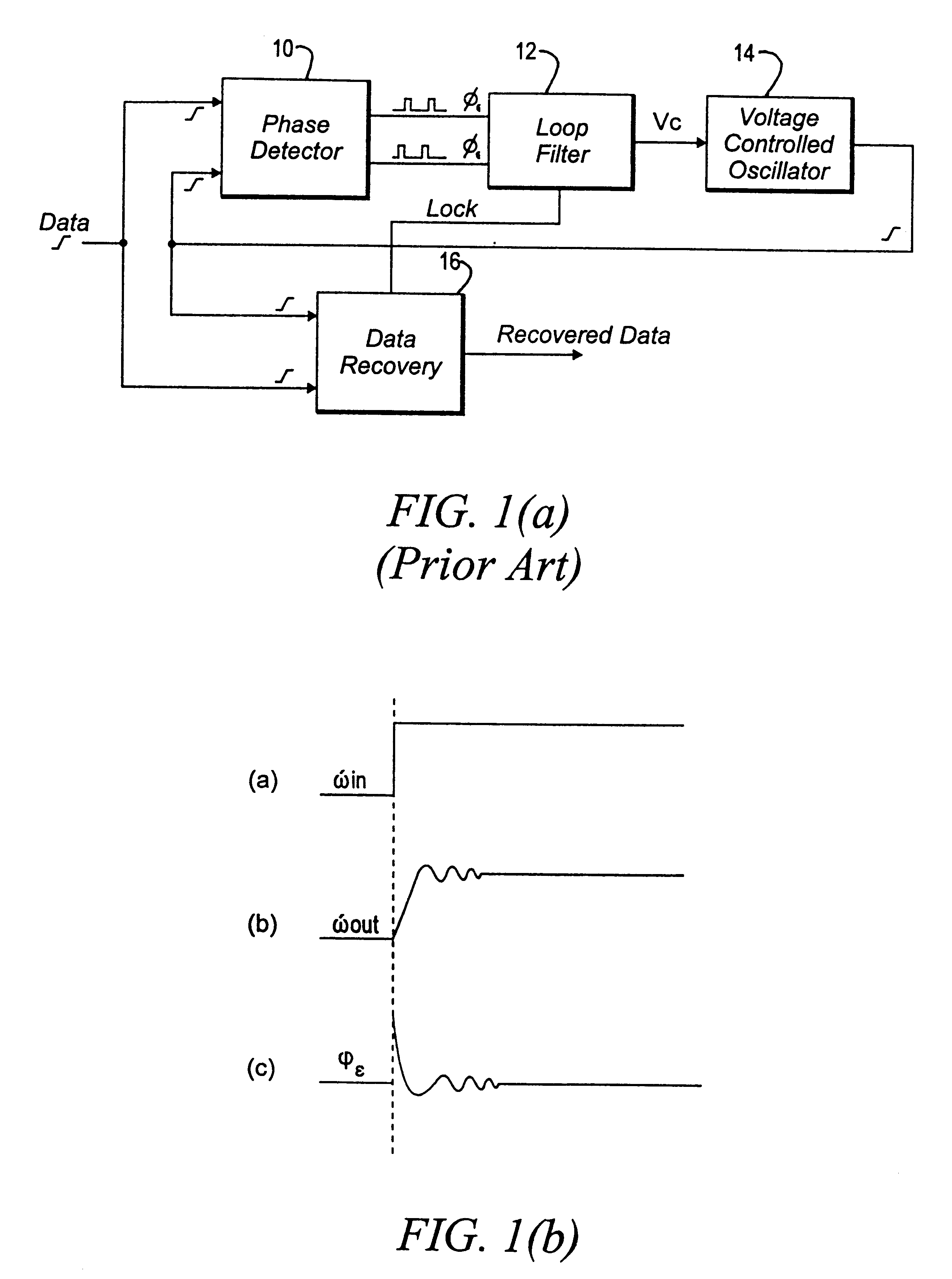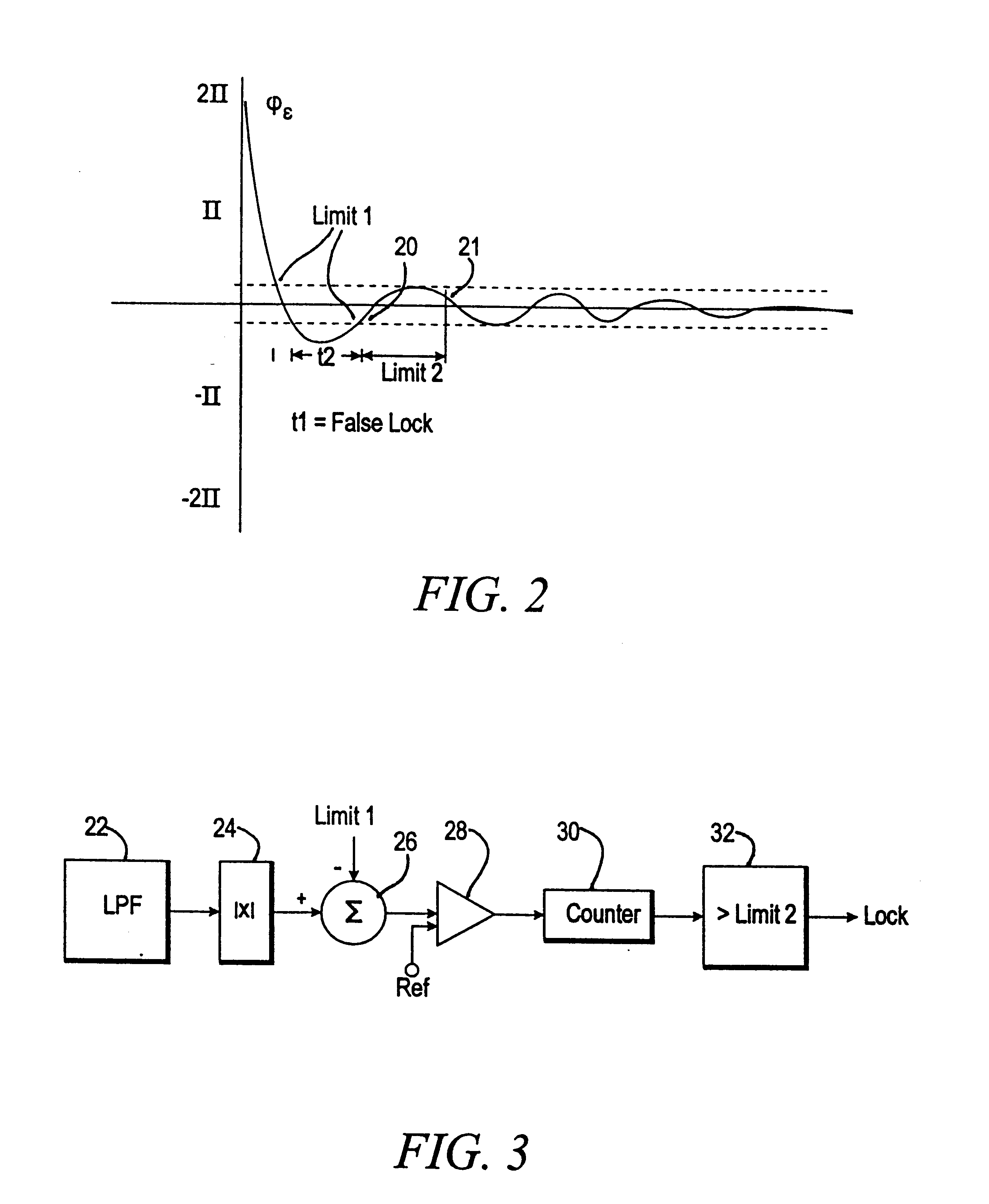Lock detector for phase locked loops
a phase lock and detector technology, applied in the direction of pulse automatic control, amplitude demodulation, digital transmission, etc., can solve the problems of phase error response characteristics, high-speed communication system use, and difficult to conceive of a modern high-speed digital communication system, so as to improve system performance
- Summary
- Abstract
- Description
- Claims
- Application Information
AI Technical Summary
Benefits of technology
Problems solved by technology
Method used
Image
Examples
Embodiment Construction
Conceptually, a conventional phase lock loop (PLL), such as depicted in semi-schematic block diagram form in FIG. 1(a), is a feedback system that operates on the excess phase of nominally periodic signals. Implementation of such a PLL normally comprises a phase detector (PD) or phase and frequency detector (PFD) 10 whose output is coupled to a loop filter (low-pass filter or LPF) 12 which, in turn, drives some means for generating a synchronous clock signal 14, such as a voltage controlled oscillator (VCO), current controlled oscillator (CCO) or decision controlled oscillator (DCO). When receiving data, during what is conventionally termed frequency or velocity lock, the oscillation frequency of the clock signal generator (termed a VCO for convenience) is determined by, and locked to the frequency of an external periodic signal source provided for such purpose (not shown), just prior to receiving an input datastream. Once frequency or velocity lock is established, the VCO runs in wh...
PUM
 Login to View More
Login to View More Abstract
Description
Claims
Application Information
 Login to View More
Login to View More - R&D
- Intellectual Property
- Life Sciences
- Materials
- Tech Scout
- Unparalleled Data Quality
- Higher Quality Content
- 60% Fewer Hallucinations
Browse by: Latest US Patents, China's latest patents, Technical Efficacy Thesaurus, Application Domain, Technology Topic, Popular Technical Reports.
© 2025 PatSnap. All rights reserved.Legal|Privacy policy|Modern Slavery Act Transparency Statement|Sitemap|About US| Contact US: help@patsnap.com



